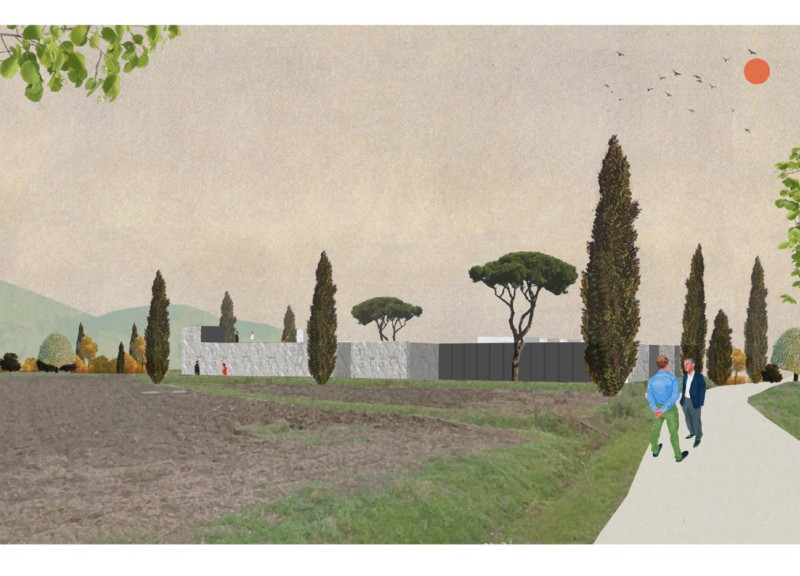5 key facts about this project
The project is situated in a context that blends history with contemporary needs, aiming to create spaces that feel fresh and purposeful. Drawing from the idea of “Incipit vita nova,” it embodies a spirit of renewal, suggesting that the lessons from the past can inform a productive future. This design fosters connections between different time periods, inviting users to engage with both history and modernity.
Concept of NEW RUINS
The notion of “NEW RUINS” serves as a foundation for exploring how history can guide contemporary architectural practices. Instead of viewing the past as a constraint, the design interprets it as a valuable resource. Engaging in analysis and adaptation, the project challenges conventional expectations, aiming to reinterpret existing structures in a way that reestablishes their significance. This relationship to context becomes a key part of guiding the future of the development.
Methodology and User Experience
Central to the design is a focus on the process known as ‘ground works.’ It emphasizes the careful removal, replacement, and creative reimagining of various architectural elements. This method encourages users to navigate thoughtfully through the space, leading to experiences that promote exploration and interaction. By acknowledging the challenges of movement within the environment, the design fosters a deeper connection to the spaces people occupy.
Integration with Nature
A goal of the design is to achieve a connection between constructed spaces and the natural surroundings. There is a clear intention to create an environment where materials and shapes work well with the landscape. The emphasis on transparency suggests a desire to let in light and blur the lines between inside and outside. This relationship with the landscape recognizes the role architecture plays in bridging the gap between people and their environment, highlighting the importance of ecological considerations.
Responsibility in Architecture
The approach taken here understands nature as more than just a backdrop; it is a vital participant in the architectural narrative. There is an emphasis on recognizing the complexities of the landscape and the interplay between natural and built elements. This understanding shapes the responsibilities of architects to both respect natural systems and enhance human experiences.
The ideas presented manifest in a design that encourages user interaction. Each feature is considered carefully, allowing the architecture to resonate with the surrounding environment. This results in a space infused with character, where people can connect with their surroundings in meaningful ways.






















































